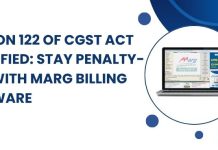Cheques have been used as a popular mode of payment for centuries. It is a simple and convenient method of transferring funds from one account to another. However, a cheque can bounce due to various reasons, causing inconvenience to both the issuer and the recipient. In this article, we will discuss the causes, consequences, and remedies of cheque bounce.
Causes of Cheque Bounce There can be several reasons for a cheque bounce. Some of the common causes are:
Insufficient funds: This is the most common reason for cheque bounce. When the issuer does not have enough funds in their account to honor the cheque, it bounces.
Account closed: If the issuer closes their account or if the account becomes inactive, the cheque will bounce.
Mismatched signature: If the signature on the cheque does not match the signature on the issuer’s bank records, the cheque may be dishonored.
Post-dated cheque: A post-dated cheque can bounce if the issuer stops payment on it or if they do not have sufficient funds to cover it on the date it is due.
Overwriting or alteration: If there are any alterations or overwriting on the cheque, it may be dishonored.
Stale cheque: If a cheque is presented for payment after three months from the date of issue, it is considered stale, and the bank may refuse to honor it.
Consequences of Cheque Bounce
When a cheque bounces, it not only causes inconvenience to the recipient but also has legal consequences for the issuer. Some of the consequences of a cheque bounce are:
Financial loss: The recipient of the cheque incurs a financial loss as they do not receive the payment they were expecting.
Legal action: The recipient can take legal action against the issuer for non-payment of the cheque. This can result in civil or criminal proceedings, depending on the severity of the offense.
Damage to credit score: Cheque bounce can negatively impact the issuer’s credit score, which can affect their ability to get loans or credit in the future.
Penalty charges: The bank may charge penalty fees for cheque bounce, which can add to the financial burden of the issuer.
Remedies for Cheque Bounce
If a cheque bounces, there are several remedies available to both the issuer and the recipient. Some of the remedies are:
Representing the cheque: The recipient can re-present the cheque for payment after making sure that there are sufficient funds in the issuer’s account.
Filing a case: If the issuer refuses to pay or if the cheque bounce is intentional, the recipient can file a case against the issuer for non-payment of the cheque.
Negotiating a settlement: The parties can negotiate a settlement and agree on a payment plan to settle the issue.
Using alternative payment methods: To avoid cheque bounce, parties can use alternative payment methods such as online transfers, credit cards, or payment apps.
Precautions to avoid Cheque bounces, both the issuer and the recipient can take some precautions. Some of the precautions are:
Maintaining sufficient funds: Issuers should ensure that there are sufficient funds in their account before issuing a cheque.
Using correct details: The issuer should provide correct details such as the correct date, amount, and payee name on the cheque.
Avoiding post-dated cheques: Issuers should avoid issuing post-dated cheques as it increases the chances of cheque bounce.
Checking signature and date: The recipient should check the signature and date on the cheque to ensure that it is valid.
Conclusion
Cheque bounce can cause inconvenience and financial loss to both the issuer and the recipient. It is essential to take precautions to avoid cheque bounce and to be aware of the consequences of dishonored cheques
Other Related Blogs: Break Even Analysis
Frequently Asked Questions:
Q:1 What is a cheque bounce?
A: A cheque bounce occurs when a cheque issued by a person is not honored by the bank on which it is drawn due to insufficient funds or other reasons. This can result in legal and financial consequences for both the issuer of the cheque and the recipient.
Q:2 What are the legal consequences of a cheque bounce?
A: The legal consequences of a cheque bounce vary depending on the jurisdiction, but typically, the issuer of the cheque can face criminal charges, fines, and imprisonment. In addition, the recipient of the bounced cheque can take legal action to recover the amount owed, including filing a lawsuit or initiating legal proceedings under the Negotiable Instruments Act, if applicable.
Q:3 Can a person go to jail for a cheque bounce?
A: Yes, in some jurisdictions, the issuer of a bounced cheque can be sentenced to imprisonment, although this is usually reserved for repeat offenders or cases involving large amounts of money. However, in many cases, the issuer can avoid jail time by paying the outstanding amount or reaching a settlement with the recipient.
Q:4 What can a recipient do if they receive a bounced cheque?
A: The recipient of a bounced cheque can take legal action to recover the amount owed, including filing a lawsuit or initiating legal proceedings under the Negotiable Instruments Act. In addition, the recipient can send a legal notice to the issuer of the cheque, demanding payment of the outstanding amount within a specified period.
Q:4 Can a bank charge a fee for a bounced cheque?
A: Yes, most banks charge a fee for a bounced cheque, which can vary depending on the bank and the type of account. The fee is usually deducted from the account of the issuer of the cheque and can be in addition to any legal or financial consequences.
Q:5 How can a person avoid a cheque bounce?
A: To avoid a cheque bounce, a person should ensure that they have sufficient funds in their account to cover the amount of the cheque. They should also ensure that they have entered the correct date, signature, and other information on the cheque and that it is not post-dated or stale-dated. In addition, they should maintain accurate records of their transactions and reconcile their bank statements regularly to avoid any discrepancies or errors.






